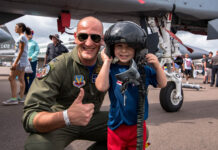For as long as I can recall, my favorite part of any movie has been the speech just before the climax. In sports movies, this is typically the pre-game speech, or halftime speech during the big game: Gene Hackman’s speech in Hoosiers, Kurt Russell’s speech in Miracle, and Denzel Washington’s speech in Remember the Titans all jump to mind as great inspirational locker room moments that transcend the screen.
It is not just sports movies that have perfected the big speech. Some of the most memorable and rousing monologues are contained in movies like Braveheart, A Few Good Men, Good Will Hunting, and The Return of the King. The reason these moments are so memorable is because the words are not just powerful in that particular moment in the movie, but are often transferable to some other aspect of the viewer’s life. I cannot relate to fighting off the English army for my freedom as William Wallace/Mel Gibson did in Braveheart, but I have had to find resolve to stand firm for an unpopular, but correct decision. My life experience allows me to connect more completely with the context of the words spoken in the movie.
Recently, I experienced a similar connection with a movie monologue. On a long flight, I watched Zero Dark Thirty, which— if you are unaware — is a movie about the search for Osama Bin Laden in the years after the attacks on September 11, 2001. When the CIA has trouble locating the bad guys, a senior CIA officer brings all of the intelligence analysts together and thoroughly chews them out. He tells them in colorful language that the people in the room are the only ones working to find the terrorists, no one else is going to help them, and that they need to figure out how to beat the bad guys. That notion has stuck with me for several months, not because I can relate to CIA analysts tracking terrorists, but because the underlying theme is something that I think is important for everybody in our air show community to remember: It is just us.
Later in this publication, you will read an historic summary and analysis of air show accidents and incidents over the course of the previous 22 years. As you read through it, understand this: We — you and I — are the only ones working to make the air show environment safe. There is no one else working away on secret safety programs and procedures. No one else is developing a proposal that will make you safer. No one is going to solve our problems for us. It is just us.
Personally, the notion that air show industry safety rests on our shoulders has always been a pretty sobering thought. After all, I am just one person. The thought that I, alone, can influence air show safety can often feel like blowing at a hurricane.
Regardless of your role in the air show business, I am sure you have sometimes felt this way, too. You are only a single air show performer, or just an assistant to the air show organizer, or you only provide golf carts to a couple shows. What can you possibly do to make an impact on the safety of air show performers? It is a daunting thought and a reasonable person might argue that there is nothing any one person could do to prevent an accident. I reject that possibility entirely.
The air show community has a history of making changes to address undesirable trends. This isn’t opinion or interpretation. It’s math.
If the business had not taken over administration of the ACE program in the early 1990s, the statistical trends suggest that we would have had as many as 250 more fatal accidents during the past three decades. If the industry had not embraced the principles and strategies of safety management systems (SMS) and had not worked aggressively to change the culture of air show safety in 2007-2008, it’s likely that we would have suffered an additional ten fatalities in the past decade.
Immersing yourself in those kinds of numbers and statistics can be impersonal and mind numbing. So, I try to think in terms of specific performers—our friends and colleagues—who might not be with us had we not undertaken those changes. A bit gruesome, I suppose. But it gives purpose and direction to the work that I do – the work that all of us do – to improve air show safety in tangible, practical ways.
Because even though it is just us — and that thought can be intimidating — it can also be empowering and liberating. I can make a difference. You can have an impact. Together, we are improving air show safety. Because it is just us. And that means that what we do has the potential to save lives.
So, what now? What’s the next ACE program or SMS idea that will strengthen our industry’s safety culture? I don’t know. And — if I did – I would not be writing this article; I would be busy implementing that idea to bring about that next period of positive change. It might be something already in the works like the Air Boss Recognition Program. It could be continued refinements to existing programs that have already paid safety dividends to our business. Or it might be something completely new that none of us has even considered. Without a crystal ball, it is impossible to tell, so we must continue to work on a multitude of similar initiatives.
But I don’t need a crystal ball to tell you that when that next advancement happens, it will be all of us who did it. As we continue to work to improve air show safety practices, it is crucial to own the fact that we will be responsible for whatever successes or failures we experience. You are on the team. This is our industry. It is only “us” who can improve it.








